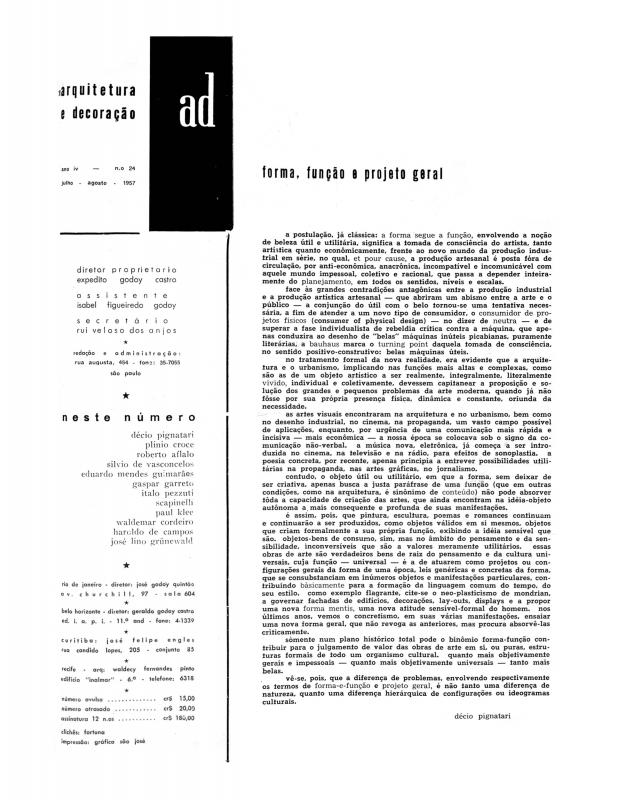Décio Pignatari (1927–2012) had been one of the major artists in Brazil since the 1950s; he introduced a new form of highly visual poetry, most notably in the 1961 “Manifesto de Poesia Concreta,” co- written with the brothers Augusto and Haroldo de Campos. In addition to his work in advertising and radical art criticism, Pignatari was one of the pioneers of semiotic studies in Brazil. His thesis on Charles Sanders-Peirce’s theory was published as “Por um pensamento icônico: semiótica da arte e do ambiente urbano” (FAU-USP, 1979). A communication theorist, he translated works by Marshall McLuhan. His creative translations included classical works by Dante, Goethe, and Shakespeare.
[Please refer to the ICAA digital archive for the following texts on the subject: published in Noigandres by Augusto de Campos, Décio Pignatari, and Haroldo de Campos, “Plano-pilôto para poesia concreta” (doc. no. 1090135); and published in the A & D magazine by Décio Pignatari, “Arte concreta: objeto e objetivo” (doc. no. 1087349), and “Forma, função e projeto geral” (doc. no. 1090070)].
[On the subject of concrete aesthetics and subsequent approaches, see “O problema social na arquitetura,” by Oscar Niemeyer (doc. no. 1110341); by Waldemar Cordeiro, “O objeto” (doc. no. 1086891), and “Teoria e prática do concretismo carioca” (doc. no. 1087287); by Theon Spanudis, “A pintura de Alfredo Volpi” (doc. no. 1085614), and “A pintura de José Antonio da Silva” (doc. no. 1110357); by Augusto de Campos, “Poesia concreta” (doc. no. 1090169); and by Eduardo Corona, “O testamento tripartido de Max Bill” (doc. no. 1110330)].










